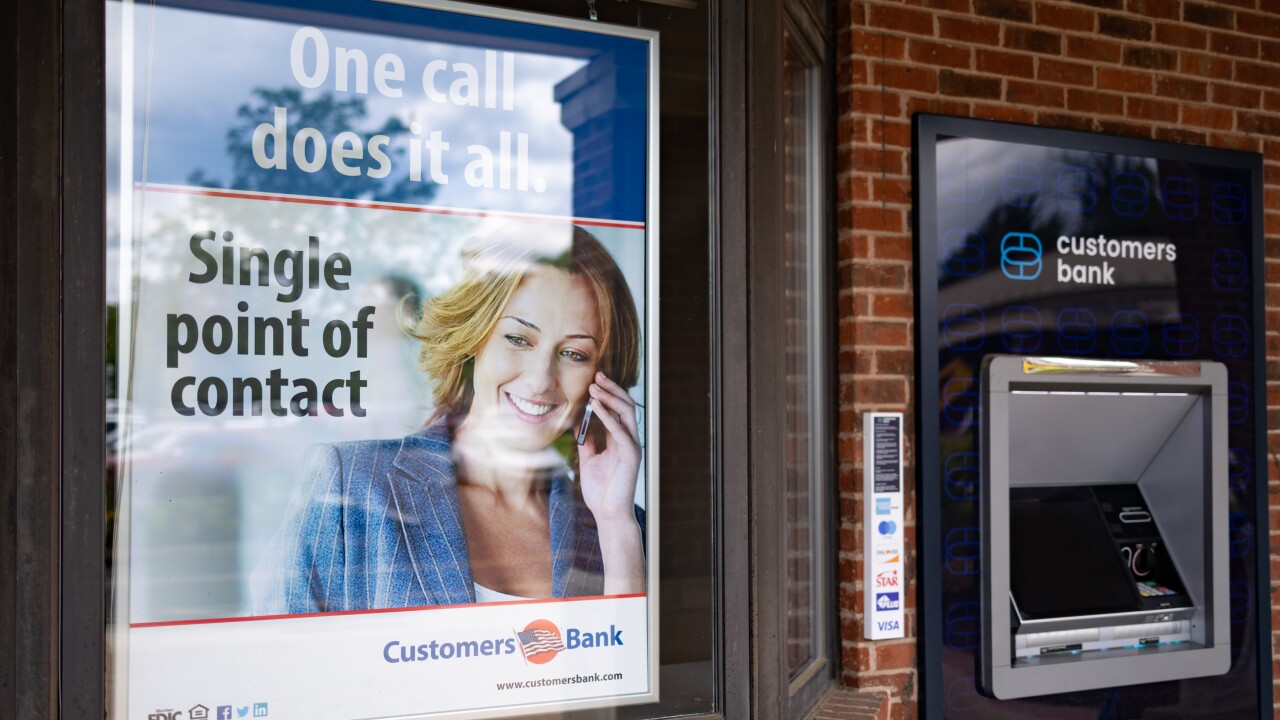Demand for commercial loans has been weak for much of the past year and among the big questions bank executives will face this earnings season is when they can expect the pace to finally pick up.
Large banks will begin reporting third-quarter earnings this week and all indications are that they will tell investors that commercial loan growth decelerated for the fourth consecutive quarter.
Exactly what’s causing businesses to hold off from borrowing is a matter of debate — but it’s clear that their reluctance has caught bankers off guard. Some banks had predicted that demand would rebound in the second half of 2017, but weekly data from the Federal Reserve suggest the comeback has yet to materialize.
“I think we’re still trying to grasp exactly why loan growth hasn’t picked up yet,” said Scott Siefers, an analyst with Sandler O’Neill. “It’s just been a disappointment and a real head- scratcher.”
Some bankers have said in recent months that, rather than borrowing, clients are turning to the capital markets for funding, taking advantage of low rates to refinance bank debt.
Others have pointed to the gridlock in Congress as the culprit, noting that businesses are waiting for policymakers to move on reducing corporate tax rates, particularly after efforts to overhaul health care insurance have mostly fizzled.
“It’s very policy dependent,” said Kevin Barker, an analyst with Piper Jaffray.

JPMorgan Chase and Citigroup will be the first of the big banks to report earnings on Thursday, with Wells Fargo, PNC Financial and Bank of America reporting on Friday. Expect analysts to pepper the banks’ executives with questions on not on only on what’s causing the slowdown, but also what investors should expect in the fourth quarter and beyond.
“Is there really something in your pipelines? Are you seeing new commitments to commit?" said Brian Klock, an analyst at Keefe, Bruyette & Woods, offering examples of the types of questions bankers can expect in the coming weeks.
Here are a few other story lines to watch.
Mixed news on margins
Net interest margins are expected to climb slightly higher.
The latest rate increase from the Federal Reserve is the primary driver, as banks take advantage of the 25-basis-point hike in June by increasing loan prices while keeping deposit rates mostly unchanged.
During the second quarter, margins at banks with assets above $250 billion rose by 18 basis points from a year earlier, to 2.81%, according to the Federal Deposit Insurance Corp. For regional banks with assets between $10 billion and $250 billion, margins rose by 9 basis points.
“It’s the June hike that is driving revenue growth” as loan volumes remain lackluster, Klock said.
Still, there are a “couple of countervailing items” that came into play during the third quarter, Siefers said.
Among them has been the
There’s also an upward pressure on deposit prices, as commercial clients steadily begin to negotiate better rates.
“We’re starting to see certain instances of exception pricing,” Siefers said.
On the consumer side, though, prices have not budged in any meaningful way, analysts said, despite predictions a year ago that they would begin to rise once the Fed raised short-term rates to around 1%. That level was crossed with the June hike.
Several factors could affect deposit pricing in the months ahead. For instance, if loan growth unexpectedly accelerates, business clients may need to draw on their cash, putting additional pressure on deposit rates, according to Siefers.
There’s also the possibility that consumers could soon to “collect their thoughts” and push for higher rates, Siefers said, noting that banks — rather than small depositors — have realized the most of benefit of the latest hikes.
Credit card questions
Credit card delinquencies are on the rise — a factor that could take a modest bite out of profits.
Most of the increase is coming from borrowers with credit scores on the lower end of the credit spectrum. According to the Federal Reserve Bank of New York, 22% of balances from borrowers with FICO scores under 620 are considered delinquent, compared with 18% last year.
Delinquencies from borrowers in the 620 to 719 range of scores are also on the rise, though at a slower pace, according to the Fed.
Credit among borrowers with high credit scores, meanwhile, remains strong.
“Credit card delinquencies are up, but they’re coming off of a very low level to begin with,” said Barker, the Piper Jaffray analyst, noting that consumer credit has been strong in recent years.
Barker added that macro-level trends, such as low unemployment, suggest that consumers’ finances are still in good shape.
The uptick in delinquencies comes as JPMorgan Chase, Bank of America and other big-name players in the card market have recently launched new, benefit-heavy cards, to attract new customers.
“There’s still the capacity [among consumers] to take on more debt,” Barker said.
Regulatory chatter
Speculation that Congress may move soon to lift the $50 billion-asset threshold for systemically important financial institutions will likely be a hot topic on earnings calls.
“This would be a welcomed sort of regulatory relief,” said Klock.
Additionally, the Equifax hack will also likely come up on the quarterly calls. The data breach of roughly 145 million consumers has made headlines recently, as the company’s former CEO was
It remains to be seen what the takeaways will be for the banking sector. The burgeoning scandal has put a greater focus on cybersecurity.
In response to the hack, consumers have also been urged to freeze their credit reports, a factor that could put a damper on consumer loan growth in the months ahead.





